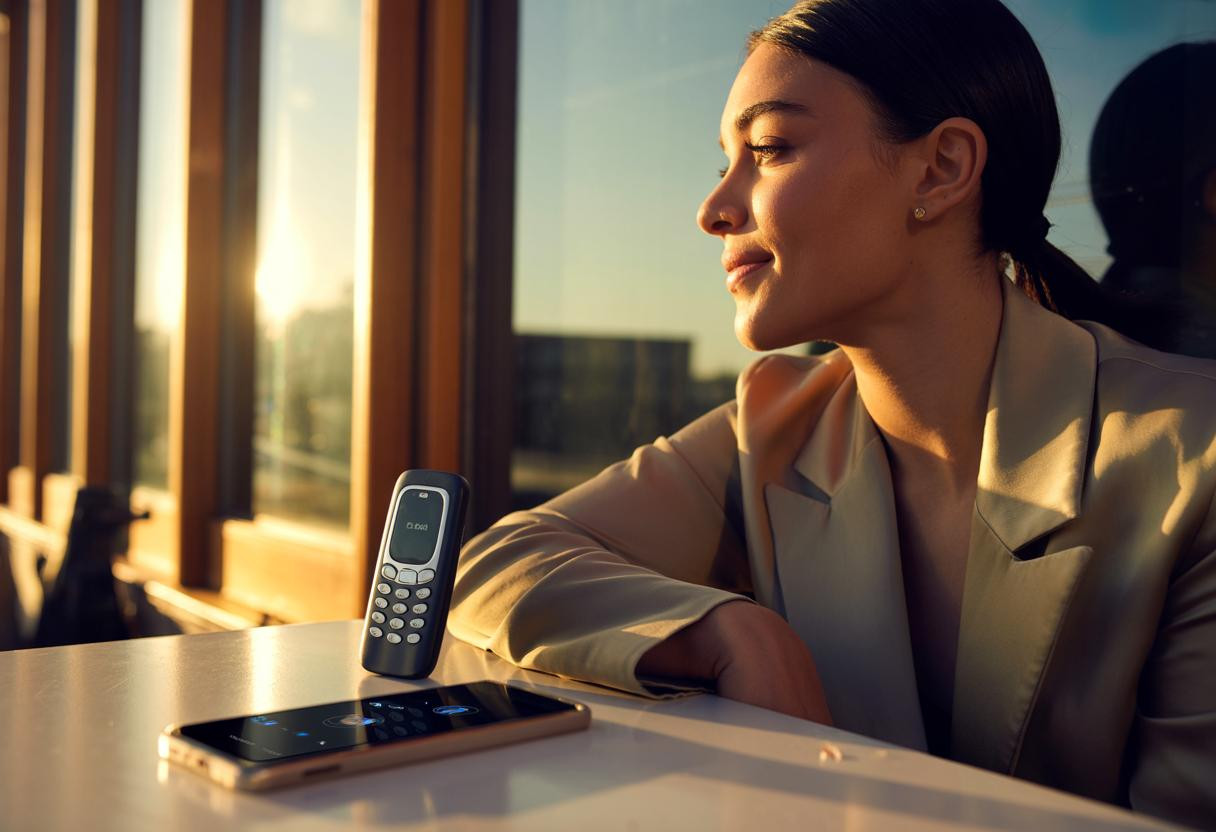In a world dominated by constant connectivity and endless digital distractions, a peculiar trend has emerged in 2025 – the revival of dumbphones. These basic feature phones, once considered relics of the early 2000s, are making a surprising comeback as people seek respite from smartphone addiction. But is this trend a genuine movement toward digital wellness or simply clever marketing capitalizing on nostalgia?
The surprising resurgence of simple technology
Sales of feature phones have seen a remarkable 15% increase since 2023, with over 3.2 million units sold in the first quarter of 2025 alone. Tech manufacturers like Nokia, Punkt, and Light have responded with sleek, minimalist devices that strip away social media apps, internet browsers, and endless notifications – offering only calls, texts, and basic functions.
“We’re witnessing a cultural correction to the smartphone era,” explains Dr. Maya Sharma, digital wellness researcher at Stanford University. “People are increasingly recognizing that constant connectivity comes with significant mental health costs, and they’re seeking deliberate ways to create boundaries.”
Digital detox as the new luxury experience
For many users, ditching smartphones for simpler alternatives represents a form of premium lifestyle choice rather than technological regression. The dumbphone movement shares similarities with vinyl records and film photography – analog experiences that provide a more intentional, tactile alternative to their digital counterparts.
Tech entrepreneur Alex Rivera switched to a Nokia 3310 reissue last year: “My dumbphone is like a meditation retreat in my pocket. When I’m out with friends, I’m actually present – not half-listening while checking Instagram.”
Beyond nostalgia: practical benefits of going back to basics
Users report numerous advantages to downgrading their devices:
- Extended battery life – often lasting 3-5 days on a single charge
- Improved sleep and reduced anxiety from less screen time
- Enhanced focus and productivity without constant notifications
- Greater privacy with reduced data collection
The perfect complement to other technologies
Interestingly, many dumbphone users aren’t completely abandoning technology. Instead, they’re creating a more intentional tech ecosystem – using tablets for necessary online tasks, wearable devices for music, and high-performance computers for work.
“Dumbphones are like digital speed bumps in our hyperconnected lives,” says consumer psychologist Dr. James Chen. “They don’t eliminate technology but force us to be more deliberate about when and how we engage online.”
Marketing genius or genuine movement?
Critics argue this trend is primarily clever marketing. Companies have transformed outdated technology into premium “digital wellness devices,” charging $300+ for phones with technology from 2005. The nostalgic appeal, similar to the resurgence of classic pastimes, certainly drives some purchases.
However, the movement’s persistence suggests deeper motivations beyond marketing manipulation:
- 73% of dumbphone users report improved mental wellbeing
- 68% maintain their simple phones for over a year (compared to smartphone upgrade cycles of 24 months)
- 82% cite reduced screen time as their primary motivation
Finding balance in a hyperconnected world
Perhaps dumbphones represent something more fundamental – a growing awareness that our relationship with technology requires active management. Like a pendulum swinging back toward equilibrium after years of digital acceleration, these devices offer a middle path between total disconnection and constant immersion.
Whether marketing ploy or meaningful movement, the dumbphone revival reminds us that technology should serve our well-being rather than undermine it. In the relentless march of progress, sometimes moving backward is the most enlightened step forward.
